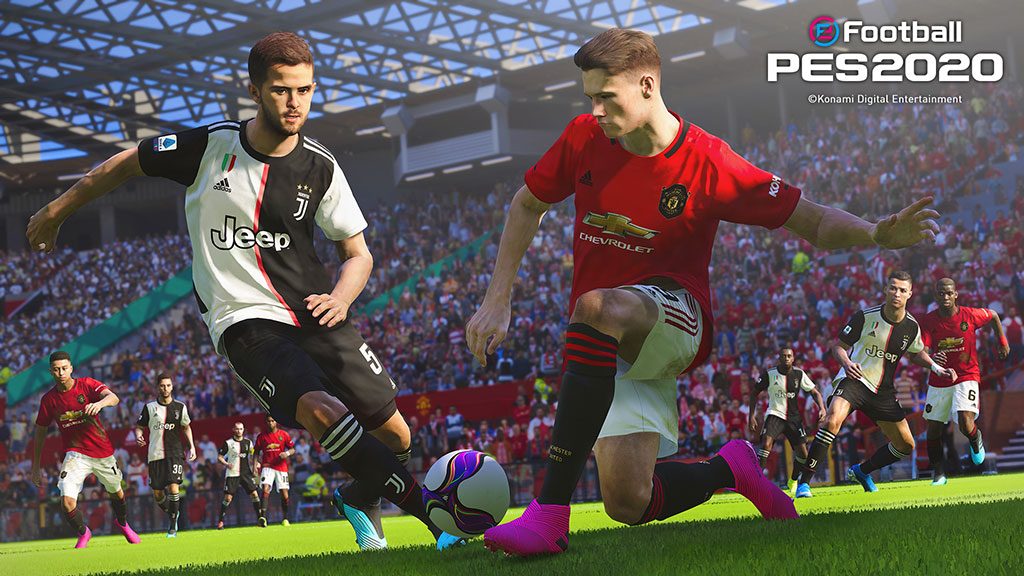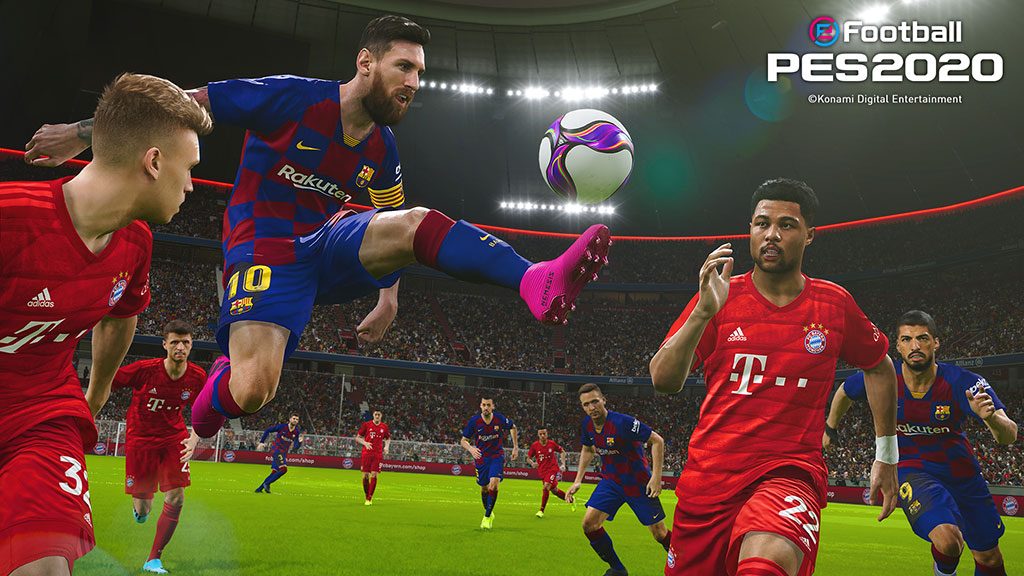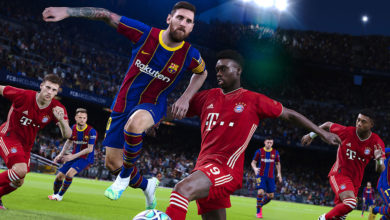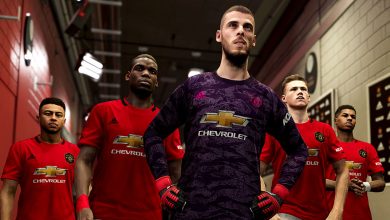Pro Evolution Soccer just won’t go away. Just when you thought that FIFA 20, with EA’s marketing clout and rabid fanbase, would steamroll its Japanese rival into irrelevance, PES 2020 – now annoyingly called eFootball Pro Evolution Soccer 2020 – came out swinging. Some surprise pre-release marketing announcements may have piqued your interest, but as always, it takes a lot more on the pitch to hold players’ attention.

Pain points
The ‘eFootball’ moniker is a nod to Konami’s focus on turning PES into a legitimate e-sports title and to that end, Konami made the surprise announcement that it had secured the official rights for Euro 2020, a deal that will also result in a corresponding esports championship. The deal will also see Euro 2020 content added to PES 2020 next year as a free update. This announcement came on the heels of several club-related licensing announcements. The likes of Bayern Munich and Manchester United are officially licensed, even though their respective leagues are not. The Italian league is licensed this year too, but the big coup is Juventus, with the Italian champions now exclusively available in PES. With this deal, FIFA gets a small taste of its own medicine, as FIFA 20 will this year have to make do with Piemonte Calcio to plug its Juventus-size hole.
But as any PES fan worth his salt will tell you, all of this is mostly irrelevant though. Whatever licenses may or may not be there, the ability to import community-created clubs and kits means PES 2020 can have every league and club (emblems, kits, the works) represented accurately in the game with just a 5-minute copy-paste process. On PS4 and PC anyway (PES Universe has the goods).
More than ever before, body shape, movement and position of a player play a key role in how effective he is on the ball
Build-up play
What is relevant though is the on-pitch action. There’s little sign of Konami letting its marketing exploits get in the way of its focus on building on PES 2019’s solid gameplay base. PES 2020 offers quite a drastic change in direction, focussing more on physics in an attempt to translate player movements and animations more accurately into how the game plays out. More than ever before, body shape, movement and position of a player play a key role in how effective he is on the ball. Being off-balance, twisting in awkward positions, facing in the wrong direction, or being pressured by defenders will more often than not result in passes or shots that are either inaccurate or under/over powered. There is a remarkable emphasis on positioning and poise, which goes a long way towards taming PES’ famed ping-pong passing game. The focus on physics is also visible in the ball itself, which feels weighty and, frankly, more real than it ever has.

Also helping to that end is the noticeably slower pace of the game. This may sound like bad news or too FIFA-esque to PES fans, but the change of pace makes perfect sense when the above parameters are considered. The newfound emphasis on getting players in the right position and movements means that you will need that extra split-second to ensure that your game is more composed. It also means that using talented players’ unique strengths can have a bigger impact on proceedings. Quick runners, sometimes overpowered in football games, can employ useful bursts of pace into open spaces without feeling super-human. A lot of this is also down to how much defending has improved. They close down spaces well to stop ambitious through balls and will use physicality to rein in runners.
Defenders can sometimes just let the ball roll by them without reacting, and too many goals have been needlessly conceded on this account. This bit is in dire need of a patch
Thankfully, none of this comes at the expense of the series’ button responsiveness. Controls still feel snappy and a lot of the credit here goes to the numerous player animations, that flow realistically without making the controls feel cumbersome. The only part of the gameplay that doesn’t feel as polished is how players react to 50-50s or rebounds/deflections. It takes a while for players to react to such situations, which can tend to break the flow. This can take a turn for the horrible when you’re defending close to your goal. Defenders can sometimes just let the ball roll by them without reacting, and too many goals have been needlessly conceded on this account. This bit is in dire need of a patch. Player switching, which was a pain in PES 2019, too remains an issue, with you often having to manually switch several times to get the correct player.
Bells and whistles
One other disappointment in PES 2020 is its lack of implementation of the new rules of the sport, such as the goal kick rule that allows defenders to receive passes in the box to play out from the back. Perhaps Konami didn’t have enough time to implement these in time for launch, but we hope these changes come in through future updates. It’s also a bit of a downer to hear that a lot of the commentary from Peter Drury and Jim Beglin is recycled from previous games, with only a few new lines peppered over the top.
Konami has talked a lot about how it has re-imagined Master League, it’s fan-favourite single-player career mode. In reality, while there are some useful tweaks all over the place, the only major change is the addition of cutscenes during important parts of the season between yourself (the coach) and team management, with some of them requiring you take decisions or choose responses. In our time with Master League, none of these decisions had any meaningful impact on future events. It’s good to see Konami continuing to support Master League, but a proper overhaul is long overdue.
Konami has taken some thoughtful decisions to make myClub not feel as blatantly pay-to-win as FUT
myClub, PES’ FIFA Ultimate Team rival, is mostly the same. It’s emphasis on player chemistry is a welcome distinction and Konami has taken some thoughtful decisions to make myClub not feel as blatantly pay-to-win as FUT, such as showing you a list of players you could unlock in a pack as well as the rarity of each. And maybe we’ve been conditioned by how stingy FUT is in giving up elite players, but myClub seems to be giving away its ‘black’ players up too easily, allowing you to build a nearly world class XI just weeks into launch.
PES 2020 is a strange game to review, because a lot of the bold gameplay changes have paid off, and there is the potential here for some seriously jaw-dropping moments. But the downside to such a drastic change in one year is the numerous niggles that have crept in; sometimes these stay hidden for long periods but at others they show up all at once. Konami also isn’t doing enough to update its game modes. With the new consoles on the horizon, PES 2020 is possibly the start of a transitional phase to the next generation. But while it holds a lot of promise, the game is a few patches away from shaking off its pre-season cobwebs.
PES 2020 is available now for PS4, Xbox One and PC. Physical editions of the game are available at various retailers, including Amazon, Games The Shop and Gameloot. The PC version is only available digitally via Steam.



